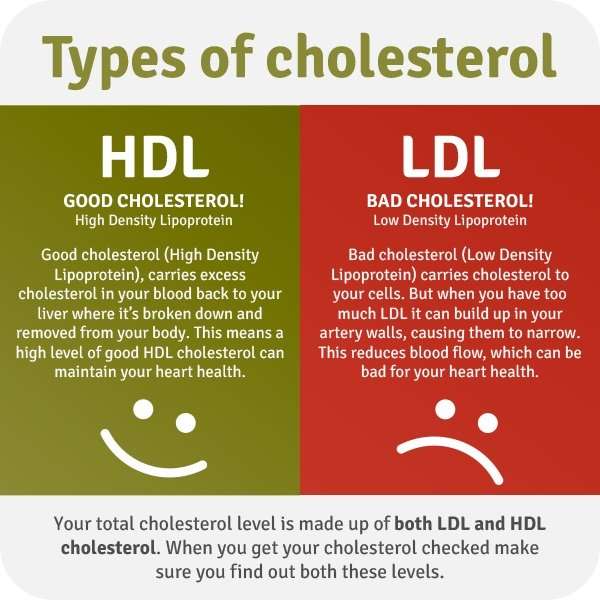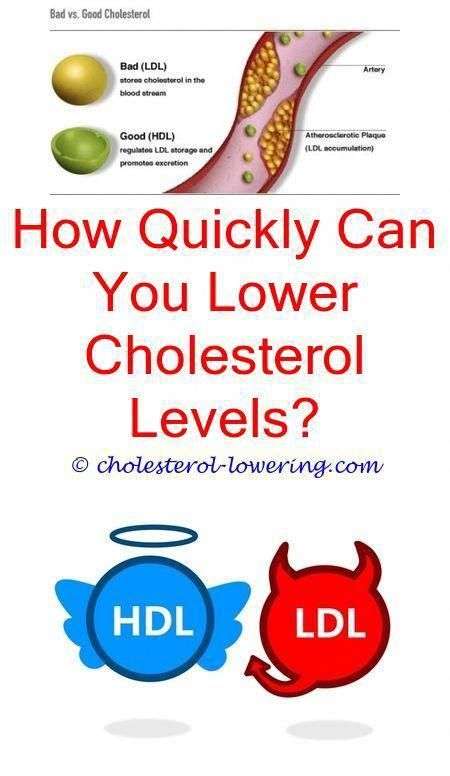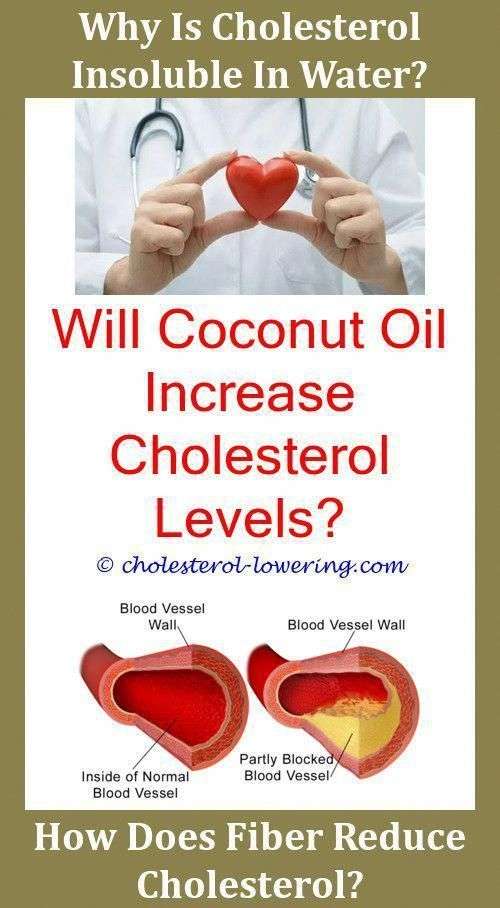Ways To Lower Cholesterol
Check your own cholesterol level and if it’s high, ask to have your kids’ levels checked.
Here are 5 ways to help keep your family’s cholesterol in control:
It’s important to make healthy living a family effort. The steps you take to improve your family’s lifestyle will have a positive effect on your family’s health now and far into the future.
How Can I Help Lower My Child’s Cholesterol
The American Academy of Pediatrics currently recommends that children two years and older follow a healthy diet according to the current Dietary Guidelines for Americans. This should include low-fat dairy products. For children 12 months to two years of age who are overweight or obese, or who have a family history of obesity, high cholesterol, or cardiovascular disease, the use of reduced-fat milk is recommended.
You can help lower your child’s cholesterol levels by encouraging him or her to do the following:
Select a variety of foods so your child can get all the nutrients he or she needs. Children and adolescents at higher risk for cardiovascular disease with elevated LDL values above their target goals are advised to undergo nutritional counseling and take part in regular physical activity.
What Affects Cholesterol Levels
There are a variety of factors that can affect cholesterol levels. Some risk factors are within your control, while others are not:
- Genetics: These factors include familial hypercholesterolemia and a family history of heart disease.
- Sex: Males often have higher levels of LDL. After menopause, a woman’s LDL levels can also increase.
- Weight: People who are overweight or obese are at increased risk of having high cholesterol.
- Sedentary lifestyle: Lack of physical activity can increase the risk of overweight and obesity and, in turn, increase cholesterol levels.
- Diet: Overall diet quality can affect cholesterol in a negative way, including eating too many saturated and trans fats and not enough fiber.
- Age: Your body’s ability to clear cholesterol can be impacted as you age.
- Race and ethnicity: There are different rates of high cholesterol based on race/ethnicity and sex, with the highest rates among males in Hispanics and the highest rates among females in non-Hispanic Whites.
- Smoking: Smoking can increase your bad cholesterol and lower your good cholesterol.
- Other medical conditions: Having a previous history of high cholesterol, heart disease, or diabetes can increase your risk of developing high cholesterol.
Don’t Miss: Do Egg Beaters Have Yolk
Home Remedies To Lower Cholesterol Naturally
In some cases, you may be able to lower your cholesterol levels without taking medications. For example, it may be enough to eat a nutritious diet, exercise regularly, and avoid smoking tobacco products.
Some people also claim that certain herbal and nutritional supplements may help lower cholesterol levels. For instance, claims have been made about:
- ground flaxseed
However, the level of evidence supporting these claims varies. Also, the Food and Drug Administration hasnt approved any of these products for treating high cholesterol. More research is needed to learn if they can help treat this condition.
Always talk with your doctor before taking any herbal or nutritional supplements. In some cases, they might interact with other medications youre taking.
You cant control the genetic risk factors for high cholesterol. However, lifestyle factors can be managed.
To lower your risk of developing high cholesterol:
- Eat a nutritious diet thats low in cholesterol and animal fats, and high in fiber.
- Avoid excessive alcohol consumption.
- E.xercise regularly.
- Avoid smoking.
Follow your doctors recommendations for routine cholesterol screening. If youre at risk of high cholesterol or coronary heart disease, they will likely encourage you to get your cholesterol levels tested on a regular basis.
How Is High Cholesterol Diagnosed

All kids should have their cholesterol checked when they’re between 9 and 11 years old and again when they’re between 17 and 21.
Kids over 2 years old should be tested if they:
- have a parent or other close relative with a total cholesterol higher than 240 mg/dL
- have a family history of cardiovascular disease before age 55 in men and age 65 in women
- have some kinds of medical conditions
- are overweight or obese
- have diabetes, high blood pressure, or smoke cigarettes
Your doctor can order a blood test to check your child’s cholesterol. Your child may have to fast before the test.
According to the National Cholesterol Education Program guidelines, the ranges of total and LDL cholesterol for kids and teens 218 years old are:
| Category |
|---|
mg/dL = milligrams per deciliter
Read Also: How Much Cholesterol In Skinless Chicken Breast
Getting Help For Your Child
If you are worried about your child’s weight, consider consulting with a registered dietitian or expressing your concerns with your pediatrician.
Children can benefit from getting involved in meal planning, shopping, and cooking, reducing intake of sweetened beverages, and learning how to eat more fruits and vegetables. Being a good role model and getting the entire family on board is also important for making changes and providing your child with confidence.
What Does It Mean When You Have Hypercholesterolemia In Your Body
Having hypercholesterolemia in your body, results in building of fat accumulation in human blood vessels. These fatty deposits will ultimately make it hard for sufficient amount of blood to pass throughout your arteries. This in turn may increase the risk of heart attack as your heart does not get a good level of oxygen abundant blood as it requires. You are likely to get a stroke when the blood run to human brain is reduced because of hypercholesterolemia .
Recommended Reading: Does Shrimp Has Cholesterol
Make The Changes Worth Making
If you have high blood cholesterol, making lifestyle changes is a great first step to lower your risk of heart disease. If those steps dont reduce your risk enough, your doctor may prescribe medications to help.
Remember: Making even modest changes now can help to prevent significant medical issues later. Do all you can to reduce your risk for the serious effects of heart attack and stroke.
How Do Healthy Fats Affect My Child’s Cholesterol Levels
Healthy fats, also called unsaturated fats, help lower LDL cholesterol and triglyceride levels. Healthy fats include the following:
- Monounsaturated fats are found in foods such as olive oil, canola oil, avocado, nuts, and olives.
- Polyunsaturated fats, such as omega 3 fats, are found in fish, such as salmon, trout, and tuna. They can also be found in plant foods such as flaxseed, walnuts, and soybeans.
Also Check: Oysters High Cholesterol
What Is A Normal Cholesterol Level
For healthy adults, The National Health Service suggests:
- Total/entire cholesterol in the body has to be 5.0 mmol/L or lesser .
- LDL cholesterol has to be 3mmol/L or lesser
- HDL level greater than 1 mmol/L
- Triglyceride level lesser than 1.7 mmol/L
Total cholesterol level will be set lower for people who have higher risks namely high blood pressure or may be a heart disease.
- Total cholesterol of 4mmol/L or lesser
- LDL of 2mmol/L or lesser
- The ratio of total cholesterol to HDL total cholesterol divided by HDL has to be lesser than 4.
Depending on the overall risk factors of the patients, individual cholesterol targets will be set by doctors. Treatment includes change in diet for cutting down bad fats or intake of cholesterol lower medication like statins and increasing exercise.
How Is High Cholesterol In Children Treated
The best way to treat cholesterol in children is with a diet and exercise program that involves the entire family. If changes in diet and exercise do not have the desired effect, medicine might be considered for children older than eight.
Some drugs used to treat cholesterol in children include cholestyramine, colestipol, and colesevelam. Recent studies in children with very high cholesterol have supported the safe use of drugs in the statin class. A child’s cholesterol levels should be re-tested after three months of dietary changes and/or medicines.
Also Check: Does Stress Raise Cholesterol
What Causes High Cholesterol In A Child
High cholesterol in children can be passed on from parents to children, or can be caused by obesity and diet.
“Youth obesity is a leading cause of high cholesterol in children,” says Nivedita Patni, M.D., Pediatric Endocrinologist at Children’s Health and Assistant Professor at UT Southwestern. “More than 43% of children with obesity have high cholesterol compared to less than 14% of kids who are not obese.”
Children who have diabetes, kidney or liver disease, or hypothyroidism are also at risk of developing high cholesterol during childhood. Though some hereditary factors can be difficult to control, knowing your family history is important. You can also help keep your child’s cholesterol in check by making sure they eat healthy, whole food nutrition and get plenty of exercise each day.
What Are Early Signs Of Fh

When you have FH, early detection of high cholesterol levels is key to getting the treatment that can lower your risk of cardiovascular disease. In addition to family history of early cardiovascular problems, you may also notice lumps forming under your skin.
These fatty deposits are called xanthomas, and are particularly noticeable around tendons in the hands, knees, Achilles tendons and elbows, and under the skin around your eyes. Sometimes an ophthalmologist may spot signs of cholesterol deposits in your eyes as well.
Whether or not you have obvious signs of high cholesterol, you should get checked if heart disease runs in your family. Talk to your family doctor about your concerns a simple blood test is all it takes to see if your cholesterol levels are in the healthy range. A high cholesterol level at a young age is a particular red flag that you may have FH. If your doctor suspects you have the condition, you can undergo genetic testing to confirm the diagnosis.
Also Check: How Much Cholesterol In Pork
High Cholesterol In The United States
- In 20152018, nearly 12% of adults age 20 and older had total cholesterol higher than 240 mg/dL, and about 17% had high-density lipoprotein cholesterol levels less than 40 mg/dL.1
- Slightly more than half of U.S. adults who could benefit from cholesterol medicine are currently taking it.2
- Nearly 94 million U.S. adults age 20 or older have total cholesterol levels higher than 200 mg/dL. Twenty-eight million adults in the United States have total cholesterol levels higher than 240 mg/dL.1
- 7% of U.S. children and adolescents ages 6 to 19 have high total cholesterol.3
- High cholesterol has no symptoms, so many people dont know that their cholesterol is too high. A simple blood test can check cholesterol levels.
- Having high blood cholesterol raises the risk for heart disease, the leading cause of death, and for stroke, the fifth leading cause of death.
Source: Behavioral Risk Factor Surveillance System
What Does High Triglycerides Mean In A Child
High TriglyceridesChildrenTriglycerides arecanaretriglyceridesare high
Hereof, what is a normal triglyceride level for a child?
Symptoms
| Less than 150 milligrams per deciliter | |
|---|---|
| Borderline-high | |
| Very high | 500 mg/dL or higher |
Similarly, what level of triglycerides is dangerous? Borderline levels are between 150-200 mg/dL. High levels of triglycerides are associated with an increased risk of atherosclerosis and therefore coronary artery disease and stroke. Extremely high triglyceride levels may cause pancreatitis .
Also Know, how can kids lower triglycerides?
Eat and drink less sugar-sweetened foods and beverages. Drink more nonfat milk and eat nonfat dairy products daily. Eat more fish, especially oily fish such as salmon. Eat legumes, such as beans and peas.
What does it mean when triglycerides are high?
Triglycerides are a type of fat found in your blood. But high triglycerides might raise your risk of heart disease and may be a sign of metabolic syndrome. Metabolic syndrome is the combination of high blood pressure, high blood sugar, too much fat around the waist, low HDL cholesterol, and high triglycerides.
You May Like: Salmon Roe Cholesterol
Your Test Results: A Preview
Your test results will show your cholesterol levels in milligrams per deciliter of blood . Your total cholesterol and HDL cholesterol are among numerous factors your doctor can use to predict your lifetime or 10-year risk for a heart attack or stroke. Your doctor will also consider other risk factors, such as age, family history, smoking status, diabetes and high blood pressure.
Lipid profile or lipid panel is a blood test that will give you results for your HDL cholesterol, LDL cholesterol, triglycerides and total blood cholesterol.
Watch an animation about cholesterol score.
What Are The Risk Factors For Hypercholesterolemia
If you exhibit any of the following risk factors, you are more probable to possess hypercholesterolemia levels which lead to heart disease.
- Deprived diet. Hypercholesterolemia foods like high fat dairy farm products and red meat increases the total cholesterol. The cholesterol level can also rise by consumption of trans fats present in certain commercially baked crackers and cookies and saturated fat present in animal products.
- Exercise aids in reducing your bodys LDL bad cholesterol and increases your HDL or good cholesterol. You are more likely to have hypercholesterolemia risk when you are not making an effort to do any sort of physical activity.
- Diabetes. You are likely to have high Low density lipo-protein cholesterol and low High density lipo-protein cholesterol as a result of high blood sugar. High levels of blood sugar will also cause damage to the interlining of ones arteries.
- Larger waist perimeter. If you are a woman with a waist perimeter of minimal 35 inches or a man with a waist perimeter of minimal 40 inches your risk of hypercholesterolemia highly increases.
- Smoking. Tobacco smoking destructs your blood vessel walls that make it more feasible to build up fatty deposits. Your HDL level or good cholesterol may also be lowered as a result of smoking.
- Obesity. If your BMI is greater or equal to 30, you are more likely to have hypercholesterolemia risk.
Also Read:
Also Check: Is Chocolate Bad For Cholesterol
What Is Cholesterol
Cholesterol is a waxy, fat-like substance that’s found in all the cells in the body. The liver makes cholesterol, and it is also in some foods, such as meat and dairy products. The body needs some cholesterol to work properly. But if your child or teen has high cholesterol , he or she has a higher risk of coronary artery disease and other heart diseases.
Who Is At Risk
The most common reasons for high cholesterol are poor diet, being overweight, and not getting enough exercise, says Dr. Brothers. But some active and apparently healthy children inherit cholesterol problems from their parents. In fact, as many as 1 in 250 people have a genetic predisposition to high cholesterol, called familial hypercholesterolemia.
Children with a family history of high cholesterol or early heart disease should have a complete fasting lipid profile as young as age 2. This includes children with a parent, grandparent, sibling, aunt or uncle who has high cholesterol or who has had a heart attack before age 55 for a man or before age 65 for a woman.
Children who are overweight or obese should also have their cholesterol levels routinely screened by their pediatrician.
The National Institutes of Health and the American Academy of Pediatrics recommend that all children, whether or not they have known risk factors, have their cholesterol levels checked once when they are between 9 and 11 years old, and again when they are between 17 and 19.
The only way to know with certainty whether a child has high cholesterol is to perform a complete lipid profile using a blood test, says Brothers.
Don’t Miss: Baked Potato Cholesterol
Why Age Is A Factor
The recommended ranges for your cholesterol will vary based on age and gender. As people get older, cholesterol levels rise naturally. For example, people who have gone through menopause may have higher LDL and lower HDL cholesterol levels.
The American Academy of Pediatrics recommends that children’s cholesterol levels be checked between ages 9 and 11.
However, children with certain risk factors, such as those whose parents or grandparents have had heart attacks or been diagnosed with blocked arteries at age 55 or earlier in males or 65 or earlier in females, should be tested for cholesterol between ages 2 and 10.
What Are Normal Cholesterol Levels

People who do not have heart disease should aim for the following cholesterol levels:
| Cholesterol Test Results | Clinical Meaning |
| Total cholesterol below 200 mg/dL | Levels above 200 mg/dL are considered high and mean a higher risk for developing heart disease |
| LDL cholesterol below 130 mg/dL | LDL should be lower than this for those at risk of heart attacks or stroke |
| HDL cholesterol above 60 mg/dL |
|
| Triglycerides below 150 mg/dL | Levels higher than 150 mg/dL increase the risk of developing heart disease and metabolic syndrome, which is also a risk factor for heart disease, diabetes, and stroke |
| Non-HDL cholesterol below 160 mg/dL |
|
Don’t Miss: Does Tuna Have Cholesterol